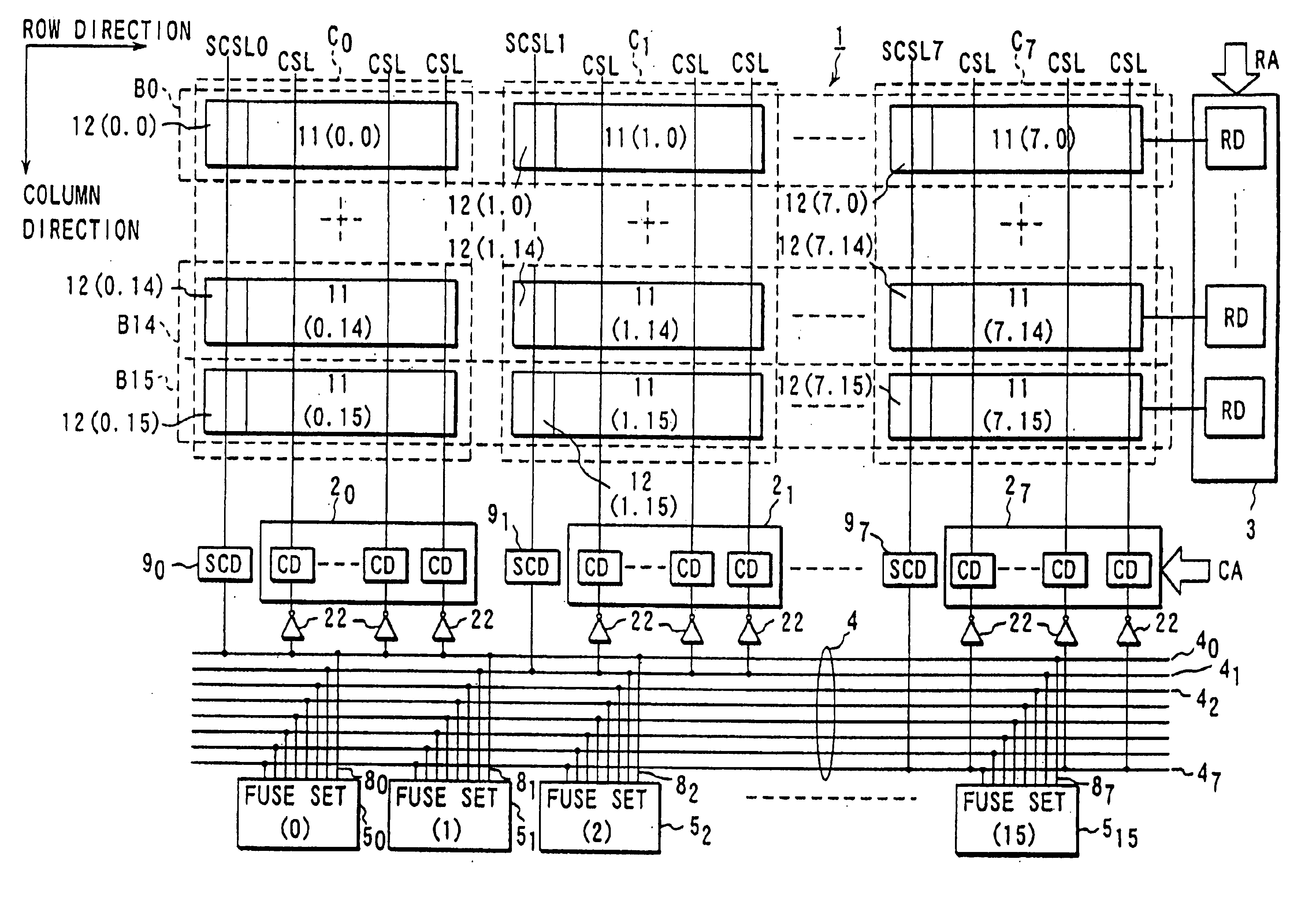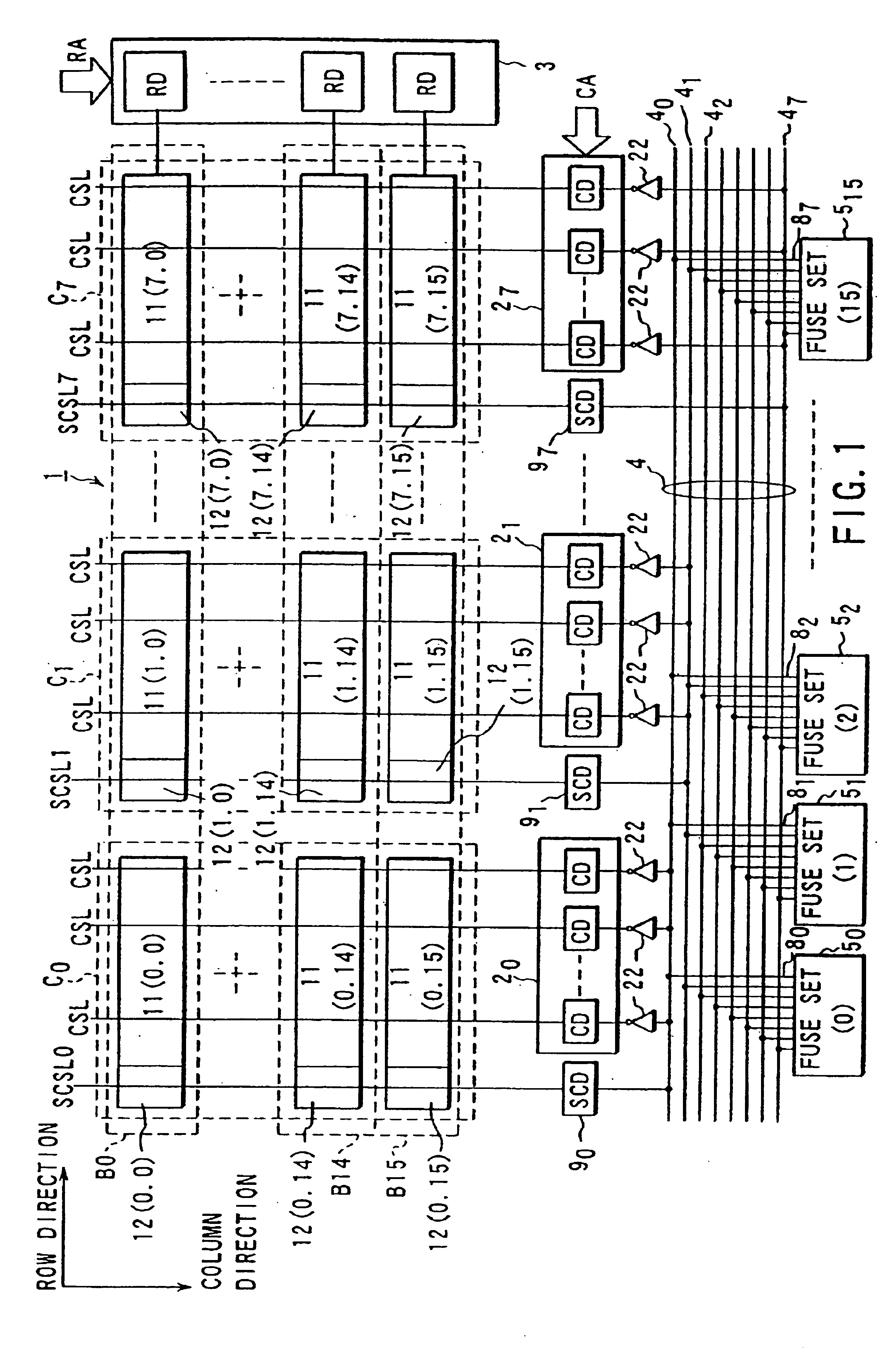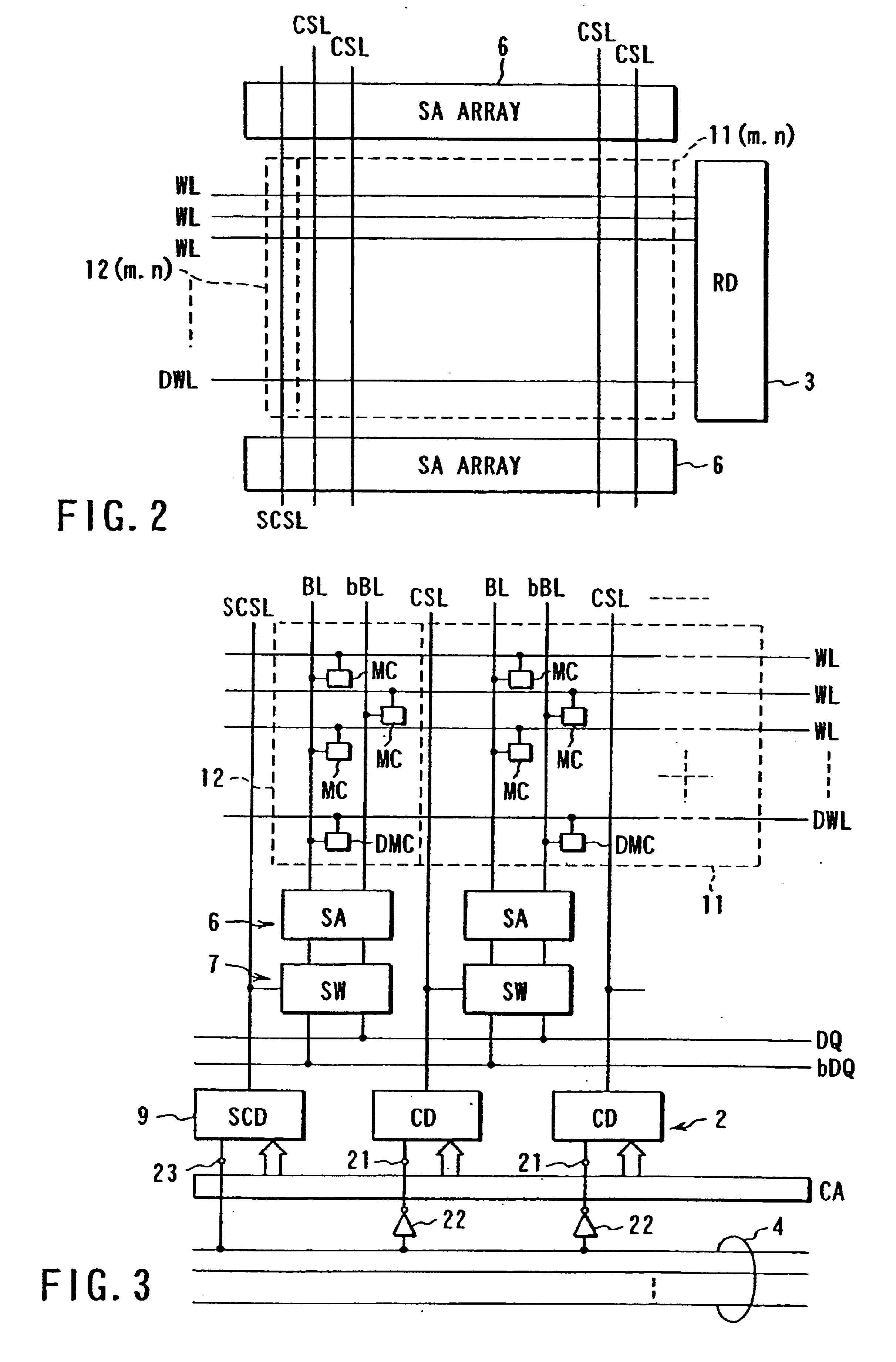Semiconductor device with flexible redundancy system
- Summary
- Abstract
- Description
- Claims
- Application Information
AI Technical Summary
Benefits of technology
Problems solved by technology
Method used
Image
Examples
Embodiment Construction
The embodiment of the invention will be described with reference to the accompanying drawings.
FIG. 1 shows an illustrative structure of a DRAM according to the embodiment of the invention. A memory cell array 1 is divided into sub cell arrays (SCA) 11 (m, n) arranged in a matrix of M (rows)×N (columns). Specifically, the memory cell array 1 is divided into 128 sub cell arrays 11 (m, n) (m: 0-7, n: 0-15) which are obtained by arranging 8 sub cell arrays in each row (M=8) and 16 sub cell arrays in each column (N=16). The division unit of the sub cell arrays 11 is determined on the basis of, for example, the number of columns which can simultaneously transmit data to a data line, and the number of rows (the number of word lines) which are connected to a single sense amplifier array and included in continuous bit lines. In this embodiment, the division unit is also a saving unit in which defective memory cells are saved by a single spare element (redundancy cell array). However, it is p...
PUM
 Login to View More
Login to View More Abstract
Description
Claims
Application Information
 Login to View More
Login to View More - R&D
- Intellectual Property
- Life Sciences
- Materials
- Tech Scout
- Unparalleled Data Quality
- Higher Quality Content
- 60% Fewer Hallucinations
Browse by: Latest US Patents, China's latest patents, Technical Efficacy Thesaurus, Application Domain, Technology Topic, Popular Technical Reports.
© 2025 PatSnap. All rights reserved.Legal|Privacy policy|Modern Slavery Act Transparency Statement|Sitemap|About US| Contact US: help@patsnap.com



